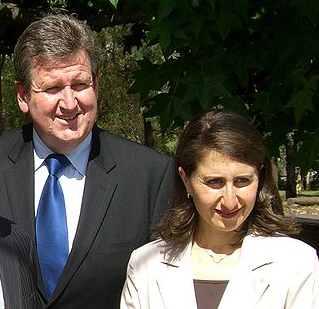Since the NSW Government election at the end of Q1 2011, there have been major changes in the organisational structure of the government of New South Wales. It is critical for those with an interest in government procurement and the business-to-government market to understand these changes and to cut through the confusion about the exact affiliation of departments, agencies, and other government bodies.

It has taken a significant amount of time for these changes to be completely implemented, for their effects to trickle down, and for information to become available. A-ZGovBIZ has spent the last few months bringing our database up to speed with this new structural paradigm. We present here a brief overview of major changes and amalgamations.
In 2009 the then-Premier Kristina Keneally first announced her whole-of-government restructuring initiative. By her plan, the many departments and agencies would be aggregated into 13 clusters, also referred to as ‘Super Departments’. Premier Keneally’s aim was to improve government service delivery and efficiency by centralising governance, sharing common services and minimising functional duplication. The reform effort proceeded slowly, and following the general election in March last year, and the Labor government being dramatically deposed by the incoming Liberal administration, the ongoing overhaul was revised. The 13 clusters from the Keneally restructure would be further consolidated into nine ‘Principal Departments’.
What exactly does this major structural change entail? Departments and agencies (and branches thereof) have changed names or been abolished, certain agencies have been moved to new departments, and throughout the different government staff have experienced reshuffles and redundancies.
These are the new nine Principal Departments:
1. Department of Attorney General and Justice (consolidating Department of Justice and Attorney General and the Police and Emergency Services NSW)
2. Department of Education and Communities (consolidating the former Department of Education and Training and the Department of Communities)
3. Department of Family and Community Services (previously the Department of Human Services)
4. Department of Finance and Services (the Department of Services, Technology and Administration, and parts of the former Land and Property Management Authority)
5. NSW Ministry of Health (previously the Department of Health)
6. Department of Premier and Cabinet (no name change, parts of the former Department of Environment, Climate Change and Water)
7. The Treasury (no name change)
8. Department of Trade and Investment, Regional Infrastructure and Services (previously the Department of Industry and Investment)
9. Transport for NSW (previously the Department of Transport and Infrastructure)
The Department of Health has been recast as the Ministry of Health, seemingly with the aim of devolving management functions down the line to area health services (currently called Local Health Districts) and even down to individual hospitals and health facilities. The new-look Ministry will be slimmer and have a flatter organisational structure, giving local health districts more say in decision-making. “The new structure will provide greater transparency and accountability, duplication of tasks will be stopped and there will be greater clarity of roles and responsibilities,” NSW Health minister, Jillian Skinner, said in a statement. The restructure has also resulted in the elimination of 200 middle management positions in order to free over $80 million dollars for front-line services and technology. As a result of the growing role of technology in the health sector, the Ministry recently established a new agency, eHealth NSW, looking to streamline information systems within health.
Though not many major changes have been made in education, the department has been amalgamated with the former Department of Communities, bringing together many agencies and divisions from areas of education, sports and recreation. The former Department of Environment, Climate Change and Water has been abolished and its functions absorbed by the Department of Premier and Cabinet, a highly controversial move which has been widely criticised by environmentalists. The Attorney General’s department has also absorbed a variety of business units including NSW Corrective Services, NSW Police Force and Fire, Rescue NSW and State Emergency Service.
Significant changes have also been made in the transport sector. The Roads and Traffic Authority (RTA), NSW Maritime, the Country Rail Infrastructure Authority, and the Transport Construction Authority have been killed off and consolidated into the new department Transport for NSW. “Transport for NSW will take charge of major procurement and long-term planning and policy, meaning for the first time we will see a co-ordinated and holistic approach to public transport,” said Minister for Transport Gladys Berejiklian when announcing the restructure.
The new structure brings many changes to the organisation of departments in the NSW Government and this is something that government vendors must consider carefully.
Get in front of the curve. Get in front of your competitors. And get your promotional material out to the very latest state government marketing lists comprising thousands of public sector managers. Call us now - 02 9516 4703.

